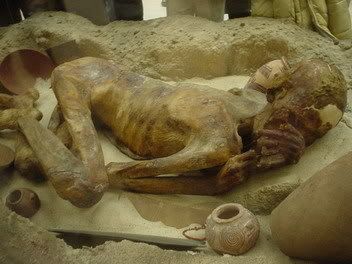Other cultures that had developed embalming processes include the Incas and other cultures of Peru, whose climate also favoured a form of mummification.

Embalming in Europe had a much more sporadic existence. It was attempted from time to time, especially during the Crusades, when crusading noblemen wished to have their bodies preserved for burial closer to home. Embalming began to come back into practice in parallel with the anatomists of the Renaissance who needed to be able to preserve their specimens.
Contemporary embalming methods advanced markedly during the American Civil War, which once again involved many servicemen dying far from home, and their families wishing them returned for local burial. Dr. Thomas Holmes received a commission from the Army Medical Corps to embalm the corpses of dead Union officers to return to their families. Military authorities also permitted private embalmers to work in military-controlled areas. The passage of Abraham Lincoln's body home for burial was made possible by his embalming and it brought the possibilities and potential of embalming to a wider public notice.
In 1867, the German chemist August Wilhelm von Hofmann discovered formaldehyde, whose preservative properties were soon discovered and which became the foundation for modern methods of embalming.
In the 19th and early 20th centuries arsenic was frequently used as an embalming fluid but has since been supplanted by other more effective and less toxic chemicals. There were questions about the possibility of arsenic from embalmed bodies later contaminating ground water supplies. There were also legal concerns as people suspected of murder by arsenic poisoning could claim that the levels of poison in the deceased's body were a result of embalming post mortem rather than evidence of homicide.It is important to differentiate embalming from taxidermy. Embalming actually preserves the intact human body while taxidermy is a recreation of an animal's form using only the creature's skin.
No comments:
Post a Comment